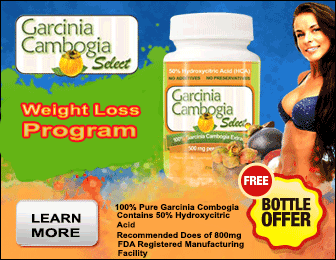According to a 1997 study (revised in August 1998) by the Food and Drug Administration, Americans ate less than five servings of fruit and vegetables, less than five to nine servings recommended by the Dietary Guidelines for Americans.
Think we?ve improved? In 2003, according to a 5 A Day study by the National Cancer Institute:
1) 74 percent of women surveyed and 85 percent of men surveyed didn?t think about eating the required minimum five a day, which the dietary guidelines recommend increasing to nine a day for men, seven for women. Note that this is a target goal, not an absolute number!
2) 46 percent of men and 40 percent of women were aware of the original 1998 message to eat five servings a day.
3) 12 percent of men and 19 percent of women ate the recommended amounts (minimum of five, maximum of seven and nine for women and men, respectively), though women were more likely to be aware of the recommendations.
4) Six out of ten people polled thought it was good to eat a variety of different veggies and fruits in different colors, and nearly two-thirds of adults believed eating plenty of fruits and vegetables lowered their chances of getting cancer and other illnesses.
New findings reported in the UK?s THE LANCET medical journal in January indicate that eating a diet rich in fruits and vegetables can lower the risk of strokes. Yet many people, especially men, are only contemplating changing nutritional habits.
There are a variety of reasons why this is so, according to the FDA article, Fruits and Vegetables: Eating Your Way to Five a Day.?
Reason #1: Fruits and vegetables cost too much.
Solution: According to dietitians, fruits and vegetables are smart buys. They contain many of the vitamins and minerals we need such as vitamins A and C. There are ways to make fruits and vegetables an even better bargain:
1) Buy fresh fruits and vegetables in season when they are at their peak in terms of flavor and nutrition. Then, you can always dehydrate them or turn them into juices with a juicer.
2) Watch coupons and grocery advertisements for money off on your favorite fruits and vegetables and juices--canned, frozen, and fresh.
3) Compare prices of different brands of canned and frozen fruits and vegetables and juices and buy the cheapest.
4) Juicers cost far less in the long run than spending $5 a day in a juice bar, and owning one encourages you to eat fruits and vegetables.
Reason #2: Fruits and vegetables take too long to prepare.
Solution: Look for ways to make fruits and veggies an easy, delicious treat you?ll want to eat.
1) Your grocery store has many ready-to-serve raw vegetables and fruits in the produce section. These items can be used easily in juicers and dehydrators without any loss of flavor or nutrition.
2) Buy a juicer and make fresh fruit and vegetable juices whenever possible. Juices can be refrigerated or frozen, but for maximum benefit, drink fresh juice as soon as you make it.
3) Keep on hand canned and bottled juices, homemade juices, and frozen, dried, and dehydrated fruits and vegetables.
Reason #3: Fresh fruits and vegetables spoil too quickly.
Solution: There are great ways to preserve fresh fruits and vegetables if you aren?t tempted to reach out and grab a medium-size apple (one serving).
1) Turn fruits and vegetables into juices. Juice is not as likely to spoil and can be frozen.
2) Buy both fresh and canned fruits and vegetables. Eat the fresh vegetables first. You can even dehydrate and preserve them. Then, save the canned items for use later.
3) Keep fruits and vegetables where you can see them--in juice bottles and quarts, on the top shelf of the refrigerator, or, for oranges and bananas, on the table or counter or another easy-to-spot-place. Attractive bowls or containers and veggie or fruit trays will invite you to reach out when you?re hungry.
4) Vary your veggie and fruit colors so you?re not tempted to let strawberries spoil and lettuce wilt. Think veggies all have to be boring green? Think again! You can place, for example, fresh carrots besides avocadoes. Have an avocado-and-tomato salad. Did we mention guacamole?
Reason #4: People are concerned about pesticides in their food.
Solution: The increased availability of organic produce makes your food choices safer?you don?t have to worry about your healthy snacks. Just make sure to read labels?not all produce is 100% organic. Some other helpful hints:
1) Wash your fruits and veggies?even if bagged salads say pre-washed. Use a vegetable brush for fruits and veggies with skins, such as apples and potatoes.
2) Outer leaves of cruciferous or leafy vegetables wilt quickly, and pesticides are more likely to linger. Toss them.
3) Although fresh is best, steaming, boiling, or baking will cleanse your food.
Fruits and vegetables offer a variety of tastes and nutritional values. And--surprise--most of them make delicious juices with little extra effort. The FDA has a complete list of vegetables available.
Think five, seven and nine. Like the respondents of the 2003 study, you?ll feel better when you do. Visit 5ADay.gov and say, ?Gimme five!?
Kristin Johnson is the health editor for LivingRight.com, your source for health appliances, including juicers such as the Omega 8003 juicer, the powerful top-selling juicer for fruits and vegetables. You?ll also find other health-enhancing juicers such as the Green Power Kempo, Champion Juicer 2000+, Green Star Juicer GS-2000, and the L?Equip Pulp Ejector Juicer Model 221. Visit http://www.livingright.com for health appliances and ideas on living right.











No comments:
Post a Comment